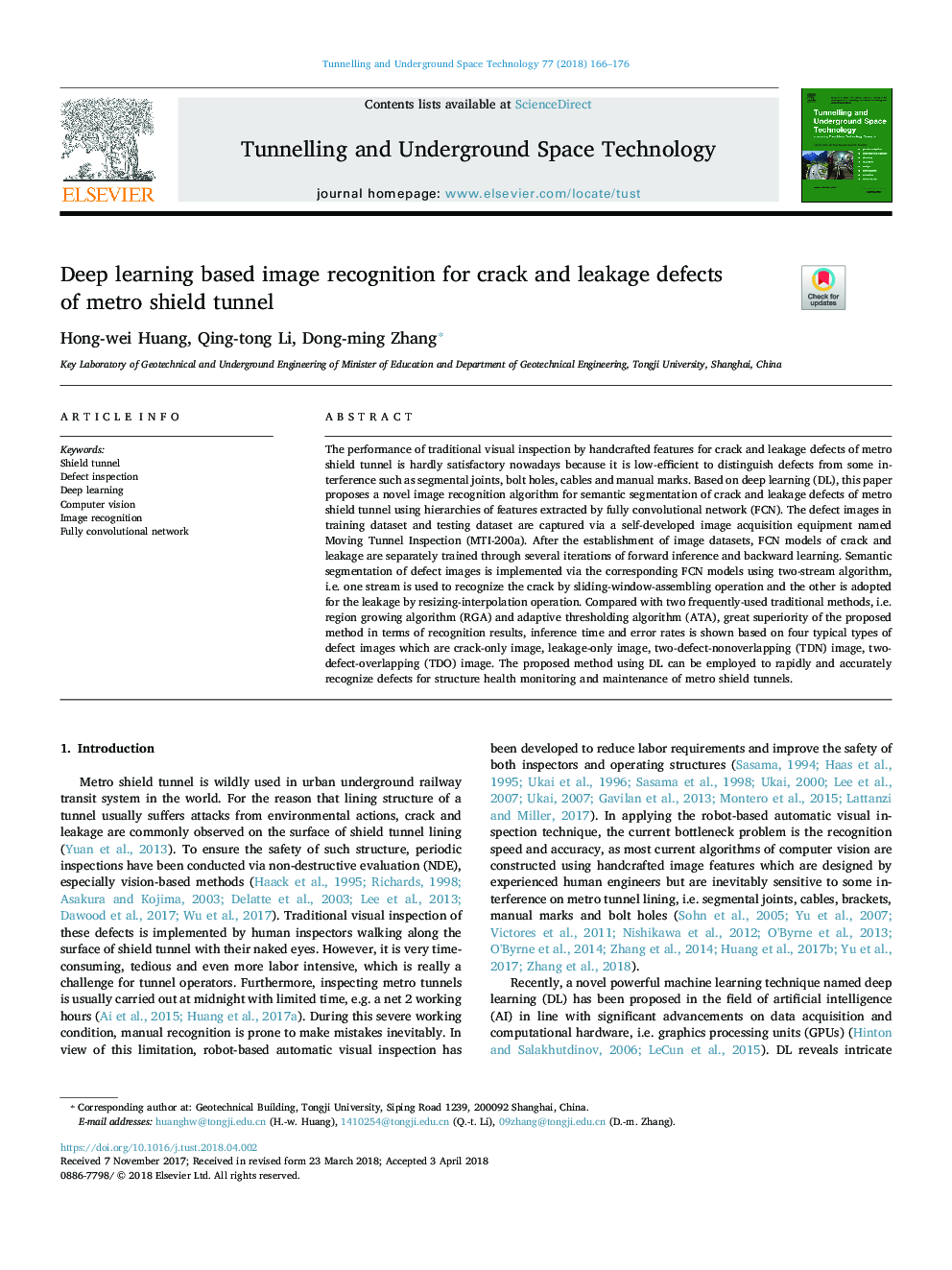| Article ID | Journal | Published Year | Pages | File Type |
|---|---|---|---|---|
| 6782473 | Tunnelling and Underground Space Technology | 2018 | 11 Pages |
Abstract
The performance of traditional visual inspection by handcrafted features for crack and leakage defects of metro shield tunnel is hardly satisfactory nowadays because it is low-efficient to distinguish defects from some interference such as segmental joints, bolt holes, cables and manual marks. Based on deep learning (DL), this paper proposes a novel image recognition algorithm for semantic segmentation of crack and leakage defects of metro shield tunnel using hierarchies of features extracted by fully convolutional network (FCN). The defect images in training dataset and testing dataset are captured via a self-developed image acquisition equipment named Moving Tunnel Inspection (MTI-200a). After the establishment of image datasets, FCN models of crack and leakage are separately trained through several iterations of forward inference and backward learning. Semantic segmentation of defect images is implemented via the corresponding FCN models using two-stream algorithm, i.e. one stream is used to recognize the crack by sliding-window-assembling operation and the other is adopted for the leakage by resizing-interpolation operation. Compared with two frequently-used traditional methods, i.e. region growing algorithm (RGA) and adaptive thresholding algorithm (ATA), great superiority of the proposed method in terms of recognition results, inference time and error rates is shown based on four typical types of defect images which are crack-only image, leakage-only image, two-defect-nonoverlapping (TDN) image, two-defect-overlapping (TDO) image. The proposed method using DL can be employed to rapidly and accurately recognize defects for structure health monitoring and maintenance of metro shield tunnels.
Keywords
Related Topics
Physical Sciences and Engineering
Earth and Planetary Sciences
Geotechnical Engineering and Engineering Geology
Authors
Hong-wei Huang, Qing-tong Li, Dong-ming Zhang,
